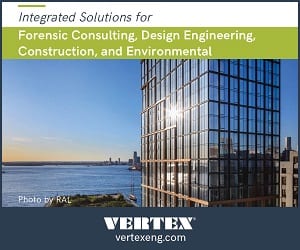Achieving higher-efficiency standards for multifamily housing in the U.S. could be a game changer that provides billions of dollars in economic benefit and significantly improves the standard of living for millions of people. In a 2014 study, the McKinsey Global Institute argues that the housing industry would need to cut costs by about 30 percent to deliver a standard unit in a multifamily building that would meet affordability requirements. This degree of cost cutting is achievable through energy and water conservation measures, but often is left unrealized due to several factors.
In the August issue, we covered the barriers to enhancing the sustainability and affordability of existing multifamily housing through green upgrades. Below we provide some solutions and best practices for overcoming those barriers.
Split incentives. By providing information on utility rebates, low-cost financing options, savings projections from reduced utilities and operations and maintenance expenses, increases in property value and revenue gains due to potential green upgrades, property owners can be given the information they need to make smart decisions based on cost-benefit analysis.
Lack of knowledge and resources at ownership level. A comprehensive energy audit that includes an itemized assessment of all energy-efficiency, water conservation and renewable energy options can be an effective way to help multifamily owners overcome their lack of knowledge and help them select the optimal solution from the wide variety and fast-changing green options they are confronted with. For each suggested green upgrade, the audit report can provide the costs, savings, rebates, incentives and payback, so that the owner can select solutions that best meet his needs.
Issues regarding a lack of resources can be overcome by working with one of the many “one-stop shop” service providers who can manage the entire green rehabilitation process for the owner, including providing access to financing and the technical assistance to make the smart decisions at the lowest possible cost.
Small project size: High transaction costs and lack of volume efficiency. For owners of small multifamily properties, high transaction costs and inefficiencies can be overcome by bundling multiple services from a single service provider. Instead of hiring separate energy auditing, engineering, construction management, financing and other service providers, owners might consider hiring one turnkey provider. Owners also might consider offering additional work such as nongreen rehab, project capital needs assessment report and apartment turnover services to the one-stop-shop service provider to help increase the project size and eliminate the disadvantage of high transaction costs.
Financing challenges. Gaining access to available incentives and rebates can be instrumental in financing green upgrades. Incentives include local, state and federal grants, tax credits and deductions, accelerated depreciation, weatherization assistance program funds and utility rebates. In many cases a multifamily property will qualify for one or several of these incentives, which can be used as owner contributions to leverage other financing.
In addition, off-balance-sheet financing programs such as Property Assessed Clean Energy, Energy Performance Contracts and Pay-for-Success are potential methods for overcoming financing hurdles. Access to low-cost financing from state housing finance agencies, other government agencies or community development financial institutions provides further support for primarily affordable multifamily properties.
Lack of control over tenant behavior. Resident engagement programs can educate tenants on the best ways to use the existing energy and water resources in their apartments and can teach them additional ways to become more efficient in their consumption behavior. These educational programs can be on site or online. Studies show that if the multifamily property staff also participate, then tenant engagement programs can produce significant results that help reduce multifamily owner fears regarding the impact of resident behavior on energy savings.
Best practices for installing green upgrades at multifamily properties. Three primary programs have had success in engaging multifamily owners to go green: direct install, weatherization assistance program and one-stop shops.
Both weatherization-assistance program and direct-install programs focus on low-hanging fruit measures (i.e., low-cost, high-saving measures) and offer them at no to little cost. Both weatherization-assistance program and direct install are popular with multifamily owners. The weatherization-assistance program is available for properties serving low-income populations only while direct-install programs from local utilities are accessible to all multifamily properties.
However, these programs come at a high-opportunity cost. Because they don’t cover more extensive retrofits such as heating and cooling systems, appliances, windows and other shell improvements, property owners miss out on the larger-ticket items that typically provide greater energy savings and health improvements but have high payback periods.
One-stop shops bundle the direct install/weatherization-assistance program solutions with other green upgrades to provide a reasonable payback on the bundled package. Bundling the green upgrades with other rehab needs allows multifamily owners to achieve a better end result that makes their multifamily property more affordable, sustainable and profitable, typically at little to no additional cost.












